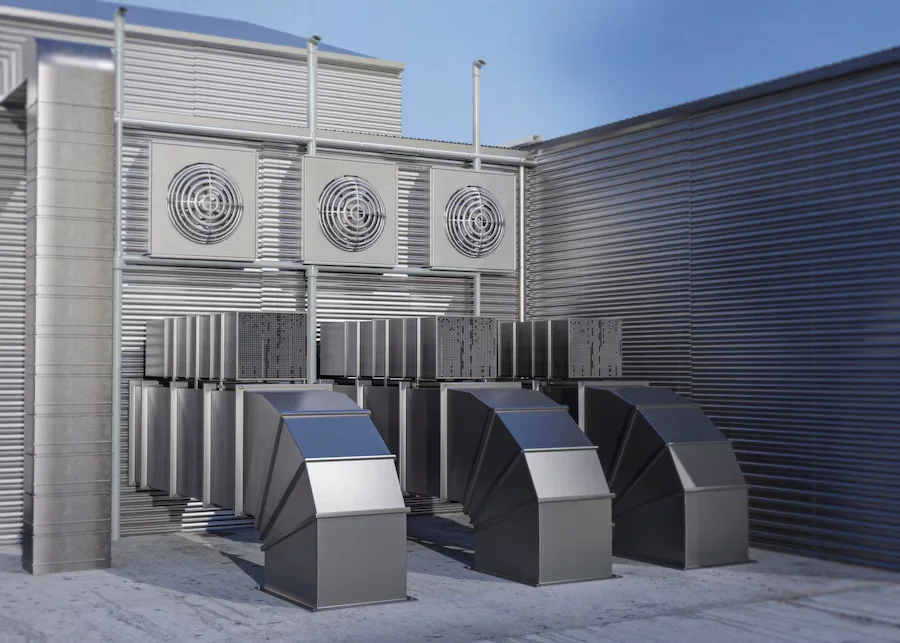Picture this: It’s the middle of winter, and your home is supposed to be your cozy retreat. But instead of warm air circulating, you’re feeling an eerie chill. If you’ve ever been there, you know how frustrating (and downright concerning) it is.
That happened to me a few years ago when my furnace suddenly quit. Turns out, the culprit was a failing heat exchanger. What I learned during my heat exchanger failure ordeal could save you from a similar headache.
Let’s break down how to identify when your heat exchanger is on the brink—and what to do about it.
What Is a Heat Exchanger? (And Why It Matters)
Before we jump into the warning signs, let’s make sure we’re on the same page. The heat exchanger is like the unsung hero of your furnace. It’s a metal component that transfers heat from the combustion chamber to the air that flows into your home.
But here’s the thing: If the heat exchanger cracks or fails, it can leak dangerous gases like carbon monoxide (CO) into your living space.
So, spotting the warning signs early isn’t just about comfort—it’s about safety.
7 Clear Signs Your Heat Exchanger Is Near Failure
1. Yellow Burner Flame Instead of Blue
Here’s the deal: Your furnace’s burner flame should always burn a steady blue. If it’s yellow or flickering, it could mean your heat exchanger isn’t venting properly.
What to do: Shut off your furnace immediately and call a professional. A yellow flame can indicate incomplete combustion, which might lead to carbon monoxide leaks.
2. Unexplained Carbon Monoxide Alarms
This one hit close to home for me. One morning, my CO detector went off, even though everything seemed fine. Turns out, my heat exchanger had a hairline crack.
What to do: If your CO alarm goes off, don’t ignore it. Open windows, leave the house, and call a technician ASAP.
3. Soot Buildup Around the Furnace
Soot is a byproduct of incomplete combustion, and it’s not something you want to see. If you notice black, chalky residue near your furnace, it’s a red flag.
What to do: Inspect your furnace for soot and schedule an inspection if you find any.
4. Unusual Noises (Like Banging or Whistling)
When my heat exchanger started failing, the first clue was a weird whistling sound. Later, I heard loud banging every time the furnace cycled on. These noises often mean the metal in the exchanger is expanding or cracking.
What to do: Don’t ignore strange furnace sounds. Call a professional to diagnose the issue.
5. Higher Energy Bills Without Explanation
If your heat exchanger isn’t working efficiently, your furnace has to work overtime to heat your home. That means your energy bills will spike.
What to do: Compare your current bills to last year’s during the same season. If there’s a big jump, it’s time to investigate.
6. Uneven Heating Throughout Your Home
Hot in one room, freezing in another? That’s a classic symptom of a struggling heats exchanger.
What to do: Check your vents for airflow. If everything seems fine but the problem persists, your heat exchanger might be to blame.
7. Visible Cracks or Rust on the Exchanger
If you’re comfortable taking a look inside your furnace, you might notice visible damage to the heat exchanger. Cracks, rust, or corrosion are surefire signs of trouble.
What to do: Don’t attempt to fix it yourself. A cracked heat exchangers requires professional repair or replacement.
Step-by-Step Guide: What to Do If You Suspect Heat Exchanger Failure
Step 1: Shut Off Your Furnace
Safety first! Turn off the furnace to prevent further damage or potential carbon monoxide exposure.
Step 2: Ventilate Your Home
If you suspect a gas leak, open windows and doors to allow fresh air to circulate.
Step 3: Call a Professional HVAC Technician
This isn’t a DIY job. A licensed technician can inspect your heat exchangers and determine the extent of the damage.
Step 4: Consider Repair or Replacement Options
Depending on the severity, you’ll need to decide whether to repair or replace the heat exchangers. In many cases, replacement is the safer (and more cost-effective) choice.
Step 5: Schedule Routine Maintenance
After resolving the issue, make furnace maintenance a priority. Annual tune-ups can catch problems before they spiral out of control.
How to Prevent Heat Exchanger Problems
Let’s be real: Heat exchanger issues are a pain. But with a little preventive care, you can avoid most of the headaches. Here’s how:
- Change Your Air Filter Regularly: A clogged filter can restrict airflow, causing your furnace to overheat and stress the heats exchanger.
- Keep Vents Open and Clear: Blocked vents make your furnace work harder, which can lead to premature wear and tear.
- Invest in Annual Furnace Maintenance: This is non-negotiable. A professional can spot small issues before they become big problems.
When It’s Time to Replace Your Furnace
Sometimes, fixing a heats exchanger isn’t worth the cost. If your furnace is more than 15 years old, replacing the entire unit might make more sense. Newer models are far more energy-efficient, and the long-term savings can offset the upfront cost.
FAQs About Heat Exchanger Failures
How much does it cost to replace a heat exchanger?
On average, replacement costs range from $1,000 to $2,500, depending on your furnace model.
Can I use my furnace with a cracked heat exchanger?
No! Using a furnace with a cracked heats exchanger is dangerous and can lead to carbon monoxide poisoning.
How long does a heat exchanger last?
With proper maintenance, most heat exchangers last 15–20 years.
Final Thoughts
Heat exchanger failure is no joke. It’s not just about keeping your home warm—it’s about keeping your family safe. By knowing the warning signs and taking quick action, you can avoid costly repairs and potentially life-threatening situations.
When in doubt, always err on the side of caution. And trust me, you’ll sleep better knowing your furnace is in good shape.







